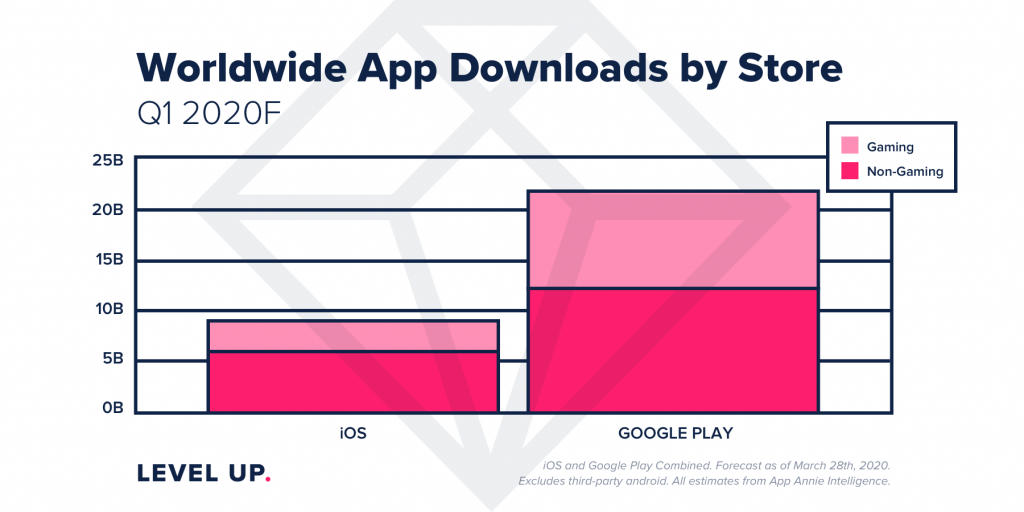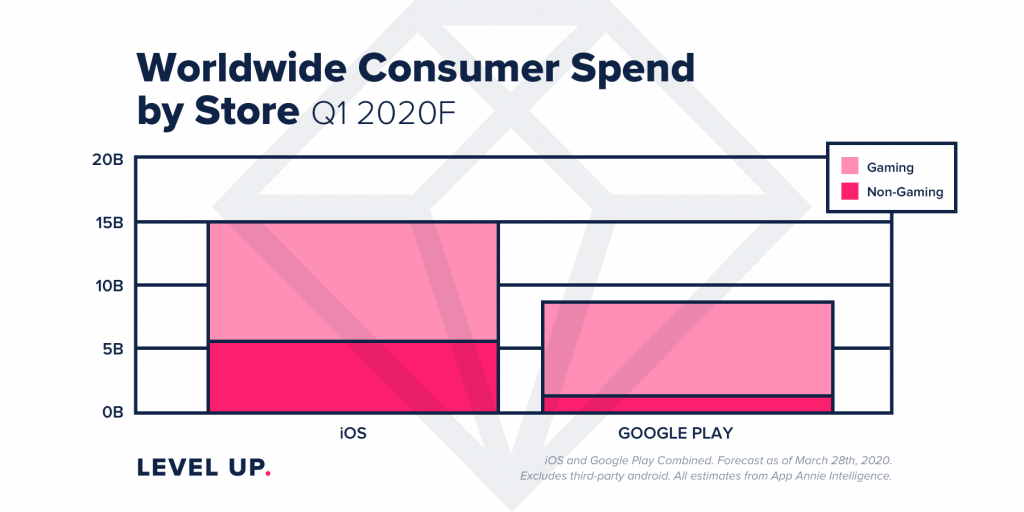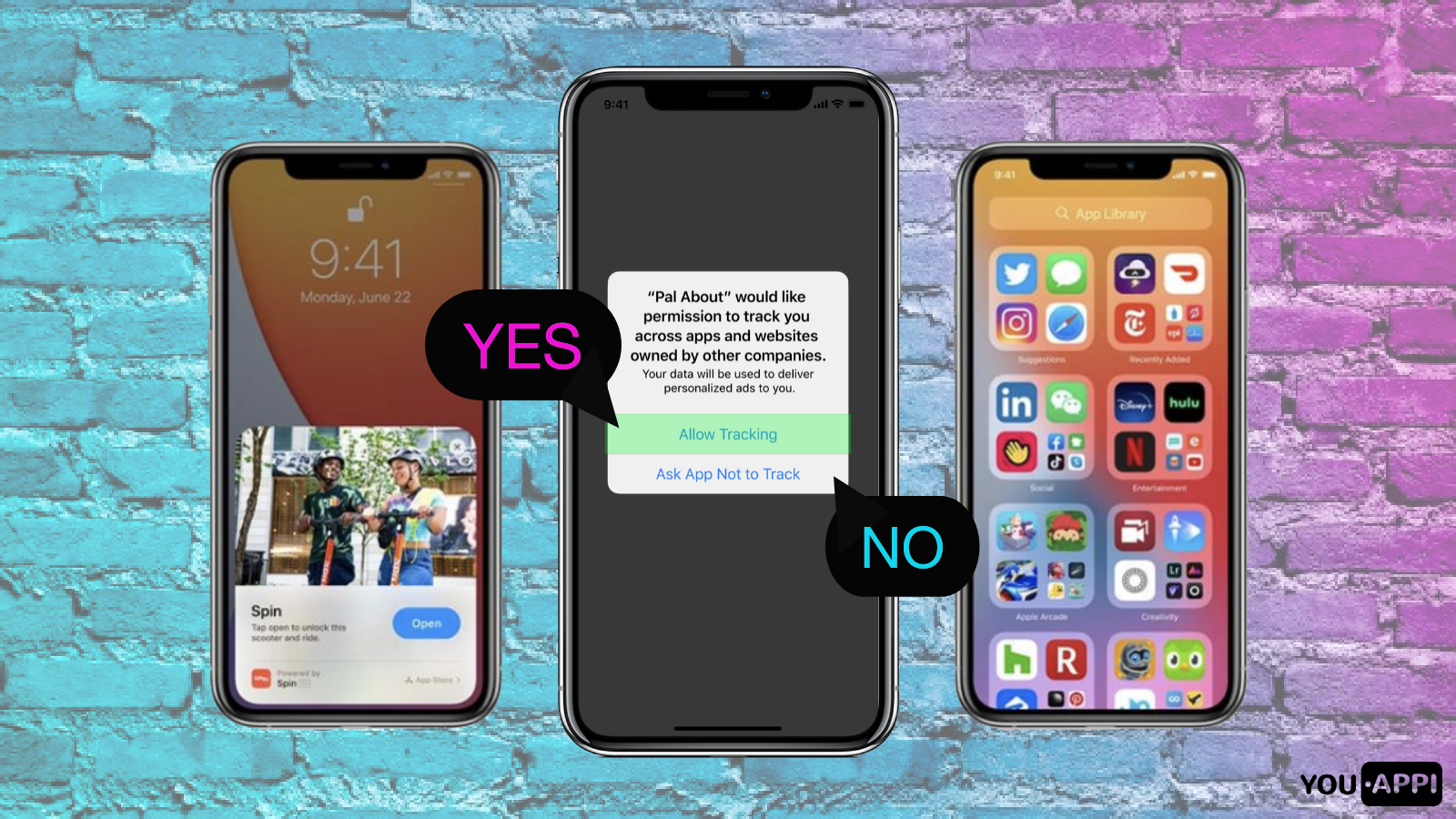At the Worldwide Developers Conference (WWDC) this year, Apple announced that it will be restricting the use of the IDFA, the mobile industry’s device identifier for advertisers on iOS. With the release of Apple’s resettable IDFA and Limit Ad Tracking (LAT) in previous years, we anticipated that this change would come. We have been preparing our platform to adapt to major privacy enhancements such as this.
A Quick Review of the iOS14 Privacy Update
Historically, IDFAs have been one of the most precise ways to track a mobile advertising campaign on iOS. This tracking occurs by assigning a device to a single IDFA. This allows advertisers to track IDFAs within a campaign, define qualities of targeted users and attribute whether they installed an app due to an ad. Starting with iOS 14 (to be launched in September 2020), apps will need to receive opt-in from users in order to use the IDFA. This grants explicit permission to apps tracking users across their products under the AppTrackingTransparency (ATT) framework. This framework will manage access to the IDFA gained through user consent. Within this framework, Apple has also outlined exemptions that might provide the ability for attribution as it exists today.
As an alternative to the IDFA opt-in provided by the ATT framework, Apple has also presented a second solution to attribution and ad measurement: the SKADNetwork. The SKAdNetwork (SKA) is an entirely different approach to attribution that removes user level data entirely. SKA will provide attribution on ads displayed on iOS devices for publishers that are registered with the SKAdNetwork. Marketers will know an install occurred, but they won’t be able to connect a specific install with a specific device. This solution will essentially place the burden of attribution on the platform itself.
The Good News
It’s important to note that these privacy changes only apply to iOS14 and while iOS users do represent the most valuable users in the mobile ecosystem, Android users still prevail by majority in many countries. Globally, Google Android remains the market leader with a 51.8% share of the smartphone market. While Apple’s share of smartphone users has risen 20% since 2012, the majority of growth has been in the U.S. The countries dominated by iOS will be most affected. Specifically, the United States with 60% iOS market share, Japan with 60% and Australia with just under 60% market share. Globally, Apple’s market share of smartphone shipments has dropped to around 10%.
As a global platform, Android represents at least 50% of YouAppi's inventory. In some countries, this share is even higher. Furthermore, some users will continue to opt-in to be eligible for targeting, so the IDFA is not going away completely. Experts are currently predicting that user opt-in rates for IDFA access will fall between 10-20%. Current projections suggest that eventually, around 70% of iOS users will be on iOS14. Given the 1.4 billion active iOS users, that means roughly 420 million iOS users will still be accessible via the IDFA.
Ways to Incentivize IDFA Opt-In
There's no doubt mobile marketers will find innovative ways to incentivize users to get higher opt-in, affecting the aforementioned projections. Too much valuable data is at stake and much of marketers’ lifetime return on investment (LTROI) depends on ad revenue. Especially if an app monetizes through advertising and provides a free service to a user, it is not outside of the realm of possibility that a user would agree to share their IDFA.
Ways marketers might incentivize users to share their IDFA could include showing users what will happen with the data they provide, rather than just presenting a pop-up opt-in message. Marketers could also present the opt-in invitation at key moments. For example, showing the ATT pop-up after letting users understand the value of the app. This could be a screen from the developer explaining why push notifications will improve their experience, after which the permission opt-in is shown.
The Bad News
We commit to full transparency to our customers. We would not be following our commitment if we glossed over the challenges posed by this change.
The mobile app industry represents $80 billion in install spend. Android devices might account for twice as many installs as iOS, but that's reversed when it comes to spend.
In Q1 2020, Android accounted for 22.5 billion installs, versus 9 billion on iOS.

Source: App Annie
Contrast this with consumer app spend: $15 billion on iOS in Q1 2020 versus $8.3 billion on Android.

Source: App Annie
As noted before, iOS users are more valuable than Android users, in fact, close to twice as valuable given these numbers. That means a disproportionate share of the $80 billion in spend will be affected by the deprecation of the IDFA. This risks leaving tens of billions of dollars on the table for mobile marketers.
Industry Responses So Far
In the weeks since Apple’s announcement, all the MMPs have released announcements of their own solutions to prepare for iOS14. Here are the highlights of developments from some of the major MMPs:
- Adjust has announced the release of its “Attribution Hash”. This solution creates a “hash” that behaves similarly to the IDFV: it will never be the same between two apps on the same device unless the apps are from the same publisher. This does not allow marketers to retarget or track a specific user or device. But, it does allow marketers to conduct ad measurement while still being compliant with iOS14.
- Kochava announced the release of "IdentityLocker", a privacy-first unified solution that will facilitate targeting and measurement on iOS14. The multi-platform solution uses an identity token, not a static identifier, which can be used in conjunction with any player in the ad ecosystem.
- AppsFlyer has released a statement that it has been preparing for an IDFA-less mobile ecosystem for the last two years. They will be sharing announcements of multiple products in the coming weeks.
What We Are Doing
We are taking steps to integrate any solutions introduced by attribution platforms to support the ATT framework and the SKAdNetwork, as well as any proprietary alternative solutions put forth by the MMPs themselves.
In addition to working closely with the attribution companies, we are evaluating SKAdnetwork developments and compatibility with our customers’ needs. Finally, we are working with Apple to make sure we’re on top of any new information that’s released about the coming changes. This includes beta testing iOS 14 throughout the summer before its official release this Fall.
Our Commitment to our Partners
The industry is still very much in the information-gathering stages of the practical implications of these changes. There’s still much to learn. In this period of uncertainty, our commitment to our customers is that we will do everything possible to work independently and in tandem with other players to develop a cohesive industry solution. Ultimately, innovation is what has driven mobile to be one of the most inventive and lucrative industries in the world. We will continue to embrace change as a catalyst for imagination and creativity, and will bravely support you, our partners, as we forge ahead.
“You never let a serious crisis go to waste. And what I mean by that it's an opportunity to do things you think you could not do before.” - Rahm Emanuel, Former White House Chief of Staff.

